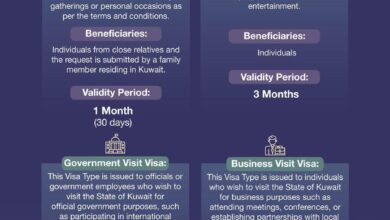AI in schools can improve teaching, enrich learning

The Times Kuwait Report
Kuwait has a high literacy rate of 96.4 percent, well-above the world average of 87.5 percent, indicating that nearly all of the population above the age of 15 can read and write. But a high literacy rate does not necessarily correlate to high levels of education. When measured against regional and international benchmarks, educational levels in Kuwait leave a lot more to be desired.
Despite spending over 5 percent of its GDP on education in recent years, and notwithstanding the repeated attempts to improve educational outcomes through initiatives in collaboration with international institutions, educational levels in Kuwait have not achieved the desired results. Teaching levels and learning outcomes in the country continue to remain far from ideal.
Although a number of reasons can be attributed to relatively low educational outcomes, including the lack of a clear long-term vision and planning, what is more important is to urgently examine and incorporate practical measures that can improve teaching and learning outcomes. In this regard, the introduction of generative artificial intelligence (AI) in the educational landscape is a possibility worth exploring.
In a recent article, education experts at the World Bank, Tracy Wilichowski and Cristóbal Cobo, provided several insights into the potential for AI to improve the efficiency and effectiveness of teachers, and enhance learning experiences in school. The article warrants the attention of policy-makers and needs due consideration by educationists in Kuwait. The immense potential for generative AI to improve teaching efficiency is only beginning to be realized worldwide, Kuwait could well become a pioneer in this field.
Given that teachers are arguably the most important school-based determinant of whether and how much students learn, the authors suggest several practical measures that policy-makers can implement to enable generative AI-driven technologies to support teachers. Although AI is not a silver bullet solution to all educational woes, it can nonetheless provide several pragmatic benefits.
Among others, AI could simplify the administrative workload of teachers; enhance classroom instructions; complement learning outside the classroom through tutoring. The administrative workload on teachers carries an opportunity cost that limits the time teachers have to focus on instruction.
A study in the Republic of Korea found that teachers with greater administrative workloads are less likely to provide feedback on students’ assignments. Generative AI tools can help teachers save time in administrative and routine activities, so that they can focus more on their students. For instance, AI systems can help teachers track and process student attendance, which, in turn, has been shown to minimize teachers’ workload and enhance student learning.
Generative AI can enhance instruction in the classroom by being an effective complement to teachers. For instance, it can assist teachers in implementing evidence-based teaching practices that are often difficult to incorporate in practice due to time and effort constraints. Generative AI can also support teachers in creating explanations, examples, and practice problems, and uncovering students misconceptions. Additionally, AI has proven to be a useful lesson planning tool.
For instance, in India, a generative AI digital assistant is being used to develop lesson plans, including activities, videos and quizzes, within minutes. Relatedly, it can help teachers implement their lesson plans and assess student knowledge by generating low-stakes quizzes and assessments.
AI can also complement instruction provided by teachers outside the classroom through tutoring. With the uptick in climate-related disasters and conflicts resulting in students missing more school, generative AI has the potential to extend learning time beyond what is possible in a typical classroom setting.
For instance, in Ghana, an AI conversational math tutor, accessible via WhatsApp, is being used to provide additional tutoring outside students’ typical math classes. While it is not quite the same as a human tutor, the Ghanaian initiative has been yielding positive outcomes. Moreover, there is also preliminary evidence that students enjoy the flexibility and tailored tasks that a generative AI tutor offers, as it allows them to study at their own pace and review information as needed.
Although generative AI creates unique opportunities to enrich teaching and learning, policy-makers need to consider several best practices when designing and implementing interventions utilizing generative AI tools, so it does not become an obstacle to human thinking. One way to achieve this is to focus on developing AI tools that complement and enhance human abilities, including by not relying on using AI as simply an ‘answer engine’. Instead, generative AI can be used to boost students’ skills and talents, which can help them learn more effectively.
Considering that teachers are the key to the successful implementation of AI in classrooms, policy-makers need to ensure they are adequately incentivized to learn about AI, and provided with the time and support needed to experiment with AI tools in their classroom. Moreover, they also require explicit training, coaching, and ongoing support to effectively integrate AI into their instruction.
Not only teachers, but decision-makers, principals, and students should develop AI digital competencies, including understanding how to use AI responsibly and ethically. Knowing when to use, but also when not to use these tools is a good starting point. Policy-makers should also develop ethical guidelines, and assess and revise them constantly due to the rapidly evolving nature of AI technologies. At a minimum, the guidelines should address issues such as privacy, bias, and equity.
In addition, to address the widening digital gap, AI solutions should be designed for students in all settings, regardless of their socio-economic status or geographic location. Specifically, AI solutions should keep in mind limited connectivity environments and design initiatives that prioritize inclusivity. Moreover, tools that are low-cost, easy to use, and do not require a high level of technical expertise are also essential.
On a related note, earlier this year, on the occasion of International Education Day on 24 January, UNESCO brought together experts and teachers from around the world to explore the role of AI in education, teacher training, digital literacy, and the ethical use of technology in classrooms. Following extensive discussions, the consensus was that AI tools can help teachers become more efficient by creating content, developing activities, and simplifying administrative tasks.
The participants also discussed how AI can help teachers encourage critical thinking and creativity in students. Shana Vidal White, an education expert, explained that AI would not be able to transform education alone, and that teachers are still the experts on what works in their classrooms. What matters is how we use it to enrich teachers’ pedagogical practices and improve student learning, said White.
Several teachers expressed concerns about protecting student data and preventing algorithmic bias, in response, Chief of Digital Learning at UNESCO, Shitanshu Mishra, said it was important to develop ethical frameworks specifically adapted to education. He called for global cooperation to reduce the risks associated with unregulated AI, and stressed the need to equip both teachers and students with guidance and social and emotional skills, to ensure responsible and inclusive use of AI in schools.
While optimal use of AI by teachers and students could improve outcomes and promote skills development, it is essential that educators keep a critical eye on the content generated by AI, as well as ensure its inclusivity. The UNESCO session also highlighted the importance of balancing technological innovation with ethical principles to ensure that tomorrow’s education is inclusive and responsive to the diverse needs of students around the world.
The future of education is being built today at the intersection of human and artificial intelligence, policymakers, educationists and other education stakeholders in Kuwait, and elsewhere, can no longer afford to ignore this development.















